Bengal had been a broader province of eastern India until divided during the partition of 1947. The territory of undivided Bengal consisted of present Bangladesh, Indian states of West Bengal and Tripura and Karimganj district of Assam. Bengal was notable for its sweet Bengali speakers, counting among the top 10 most spoken languages in the world. While exploring the history of Indian subcontinents, existence of Bengal is traceable since pre-historic times, datable from first millenium BCE.
Bengal, thorugh the centuries, has played an important role in the history of India. Early history of Bengal featured a succession of Indian Hindu empires, internal frictions, external invasions and religious tussles. Whereas, late history of the region sums up the realms of Muslim dynasties and the British dominion.
The Gangetic Delta and its sorrouding region was notable for agriculture owing to its highly fertile lands. Bengal would also connect the rest of Indian subcontinents to the south-eastern Asia. The region consisted of plenty of rivers, forming a strong water navigation framework as well. Such a geographical advantage of Bengal certainly helped itself prosper successively. Bengal therefore remained the wealthiest province within the entire Indian subcontinents for a considerable period.
Pre-historic Bengal
History of first human settlements in Bengal belong probably began more than 200,000 years ago. Paleolithic or Old Stone Age sites confirm that Bengal also featured among the oldest pre-historic human settlements in India.
Stone Age History of Bengal
The Rarh plain region of present West Bengal consists plenty of Paleolithic sites. More than 150 Paleolithic sites were discovered in Bengal. The Himalayan foothills of northern Bengal, valley slopes and river banks of western and central regions of West Bengal. The Paleolithic tools discovered from these region were carved from the pebbles of quartz and quartzite.
Mesolithic Age findings include stone tools like hunting spears and several agricultural tools. But the count of Mesolithic sites found in Bengal are relatively low. The three Mesolithic sites exist in Bengal including Birbhanpur, Paruldanga and Chamargora of Burdwan, Birbhum and Midnapore districts respectively.

Existence of Neolithic culture in the pre-historic age of Bengal also had been confirmed. More than 80 Neolithic sites dicovered in various parts of present West Bengal and Sikkim. The Himalayan foothills of Kalimpong and Sikkim several Neolithic or late stone age settlements. Other Neolithic settlements appear around the plateau fringe areas of Midnapore, Bankura, Purulia, Burdwan and Birbhum districts of West Bengal.
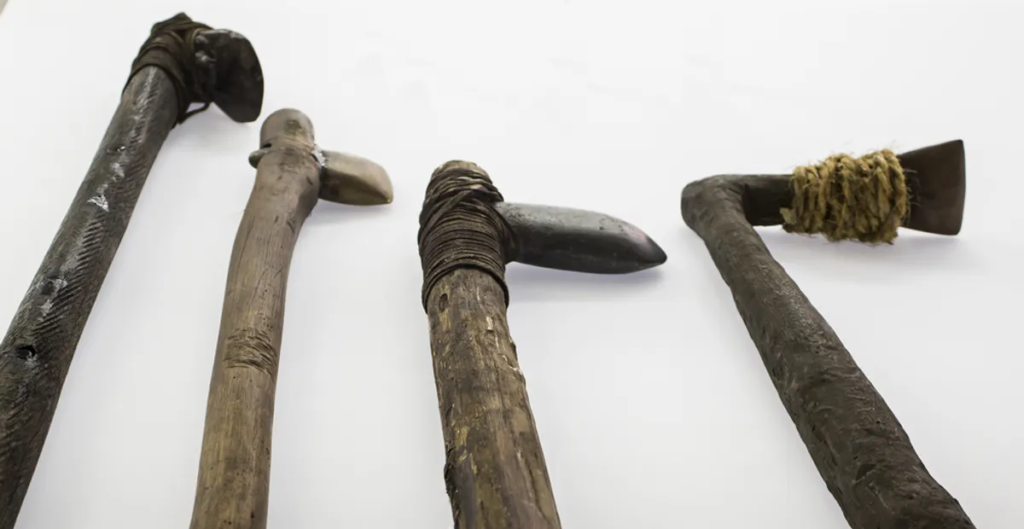
Copper Age History
Copper Age or Chalcolithic period follows the last layer of stone age. The region of Bengal had seen several Chalcolithic settlements as well. The oldest Chalcolithic settlements in Bengal are datable to 4000 BCE. Remains of Pandu Rajar Dhibi was the first Chalcolithic site of West Bengal, datable to 1600 BCE. The archaeological site appears at the bank of Ajay river in East Bardhaman district.
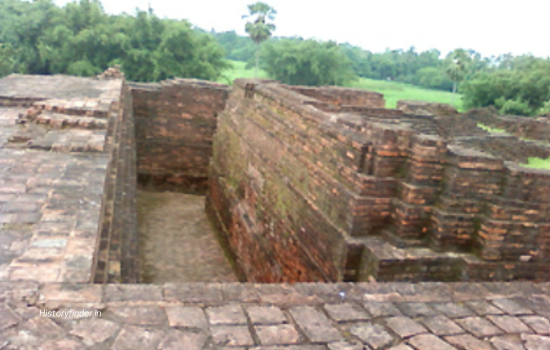
Excavations of Pandu Rajara Dhibi (mound of King Pandu) unfolds pre history era of Bengal. Remains of the village roads show a genuine mix of stone gravels with clay and water. Among the copper artefacts unearthed, quite a few are hunting and agricultural tools. Archaeological findings confirm that first rice cultivation began in Bengal during 2nd millenium BCE or Copper Age.
Bengal in Vedic Age (1500-500 BCE)
The Indus valley civilization started declining during 1500 BCE. During the Vedic age (1500-500 BCE) the Indo-Aryan movements started towards the Gangetic plain, following the river Ganges. Rigveda, however, doesn’t mention anything about Bengal or the sorrounding region. It certainly confirms Indo Aryan migration must had happened post the period of Rigveda (1500 BCE).
Later Vedic texts like Atharva Veda, however mentions about the region of Bengal. Which means, Aryans probably had migrated to Bengal during 1200-900 BCE, the period of Atharvaveda or slightly before. Vedic texts have called the pre-residing inhabitants of Bengal as ‘Dasyus’ or barbers. Mahabharata has mentions about ‘Mlechchhas’, a tribal community of coastal Bengal.
Several scriptures of Vedic Age further mention about the Pre-Vedic Bengal consisted of a number of small kingdoms. Vanga (or Banga, southern Bengal), Pundra (northern Bengal), and Suhma (western Bengal) kingdoms are most citable among them. The ‘Dharma Shastra’, a text of early 1st millenium BCE, also mentions about the kingdoms of Pundras and Bangas. The Aryans slowly settled at the Gangetic delta region. This way, the Vedic culture slowly mixed with older cultures of Bengal.
Pundra Kingdom
Exact territory and the period of reign of Pundra Kingdom is still uncertain. But several mentions in Vedic or pre-Vedic texts confirm the existence of Pundra Kingdom during 1500-1200 BCE. Perhaps the upper Ganga-Brahmaputra river basin, or the northern Bengal was the reigning area of the Pundras. The ruins of Mahasthangarh in Bogra district of present Bangladesh was perhaps the ancient Pundranagara, the capital of Pundra Kingdom. Pundra Kingdom territory probably included Rajshahi, Bogra, Pabna and Dinajpur districts of Bangladesh. Dinajpur districts of West Bengal was also a part of Pundra Kingdom then.

Pundra Kingdom was definitely among the oldest kingdoms of Bengal. But their inherent cultures and practices and still uncertain. The Vedic texts have plenty of mentions that Vedic cultures differed a lot with the existing cultures of Bengal. The Aryans also considered the Pundras as Dasyus. There is no such clarity why the Aryans thought so. But they were certainly not comfortable with the Pundras.
Vanga (Banga) Kingdom
Dharma Shastra (around 1500 BCE) was the oldest literature to mention about Vanga Empire. The fertile Gangetic delta region of southern Bengal was the probable territory of Vanga Kingdom. Artha Shastra the famous treatise of Chanakya (375-283 BCE) had several mentions of Vanga Kingdom. Such literary evidences are good enough to determine that Vanga kings ruled between 1500 and 300 BCE. Vanga coins datable between 400-300 BCE also proves that the empire had ruled in Bengal till late 1st millennium BCE.

The ruins of Chandraketugarh marks the physical existence of Vanga Kingdom. Ancient texts had mentioned the empire as Vanga Desham and Banga Rajyam. History of Sri Lanka mentions about Vanga Prince Vijaya as the first king of Sri Lanka. Mahavamsa, the Sri Lankan historical chronical mentions about arrival and conquest of Prince Vijaya from Vanga Kingdom. Further, the Brahmi inscription discovered from the remains of Chandraketugarh also states about the conquest over Sinhala by Prince Vijaya.
Gangaridai Kingdom
Ancient Greek writers, had repeatedly mentioned about existence of another ancient kingdom of Gangaridai in Bengal. Similar mentions exist in the books Diodorus Siculus, Plutarc and Ptolemy. However, Diodorus majorly referred ‘Indica’ written by Megasthenes (around 400 BCE) in his book Bibliotheca Historica. It certainly means, Gangaridai Kingdom existed in Bengal during 400 BCE and before.
Gangaridai empire existed at the eastern Gangetic bank. The Bibliotheca Historica (1st century BCE), also states about the kingdom’s strongest cavalry of 4000 war elephants. It probably enforced Alexander the great to decide his retreat from India. Later, Plutarch (46-120 CE) also had mentioned about strong army of Gangaridai Kingdom. Ptolemy also described the similar territory of the kingdom, at the ‘mouth of Ganges’.
Bengali archaeologists like Dilip Kumar Chakrabarty also believes that the ruins of Chandraketugarh was a part of ancient Gangaridai kingdom. The location appears right at the center of Gangaridai territory. Ruins of Wari-Bateshwar at Dhaka division of present Bangladesh is another probable remain of Gangaridai Kingdom.
Bengal under Ancient Empires of Magadha
During the Ancient Age of Indian history, for several centuries, Bengal had been under reign of Magadha. Different dynasties have ruled at Magadha during these period. Three major dynasties had ruled in Bengal during its ancient times:
- Nanda Dynasty;
- Maurya Dynasty; and
- Shunga Synasty
Nanda Dynasty Reign (345-322 BCE)
Mahapadma Nanda established the reign of Nanda Dynasty overpowering Shaishunga Dynasty at Magadha. Several Jain and Buddhist scripts mention about the reign and glory time of the founder of Nanda Dynasty. The first attempt of imperial conquest of United Bharatvarsh began from the first ruler of Nanda Dynasty himself. He defeated and conquered many small kingdoms of Bengal and brought them under Nanda Empire.
Mauryan Era (322-185 BCE) in Bengal
Chandragupta Maurya, removed Dhana Nanda, the last Nanda ruler and established Mauryan Dynasty at Magadha. His embrace of Jainism certainly elevated social and religious reforms in his kingdom. The 137 years of reign eventually stamped Mauryan authority on almost Indian subcontinent.
Uttarapatha (presently Grand Trunk Road), founded by Chandrgupta Maurya, passed through Bengal connecting Afghanistan to south-east Asia. The oldest and one of the longest road connected Kabul of Afghanistan to the Teknaf at Bangladesh-Mayanmar border. Mauryan King Ashoka later conducted major refurbishments of the road.
King Ashoka’s attachment to Buddhism established political tranquility and peace across the entire kingdom. He sponsored the spread of Buddhism across the subcontinent. Multiple Buddhist Stupas of Mauryan Era had been discovered from various places of Bengal. Buddhist Stupas of Karna Subarna in Murshidabad represent one of the finest examples of Ashokan influence in Bengal. Numerous archaological excavations in Bengal unearthed Mauryan coins, both of Mahajanapada and premium Mauryan series. All of these assertains strong Mauryan influence on cultures and traditions of Ancient Bengal.
Shunga Influence on Bengal (185-73 BCE)
After the decline of Maurya empire in 185 BCE, Pushyamitra established Shunga Dyansty at Magadha. Pushyamitra was the commander-in-chief of Mauryan empire, who assassinated last Mauryan ruler Brihadratha Maurya. Shunga Kings also embraced Buddhism which also kept reflecting cultures in Bengal.
Tamralipta port, became a major port city in Ancient India during the reign of the Shungas. Tamralipta or Tamralipti is the present Tamluk town of Purba Medinipur district in West Bengal. The name arrived from copper mine near Ghatshila in Jharkhand district which was the major trading item of this port.
After decline of Shunga Dynasty, the influence of Magadha on Bengal started weakening. Satvahana Dynasty established their rule at Magadha, defeating the Shunga kings. But no major influence of Satavahana realm was noticeable on Bengal.
Bengal in Classical Era
Early phase of Classical Era in Bengal consisted rules of several kingdoms. Probably detachment from Magadha helped these realms emerge in Classical period of Bengal. Domains of Samatata, Harikela are the most notable ones among the kingdoms. However, the Classical history of Bengal is generally divided into two important periods:
- Gupta Period; and
- Reign of Shashanka
Gupta Age in Bengal
Gupta Age is recognized as the golden period of Indian subcontinents. Socio-economical and political status of Bengal also flourished during Gupta Era. Entire Bengal except Samatata region, came under Gupta empire, probably during the reign of Samudragupta. Allahabad Prasasti stated the territories of Kamarupa, Davaka (Assam or Dhaka) and Samatata (Southeast Bengal) as tributary states under Samudragupta. Several gold and solver coins of Gupta period discovered at different parts of Bengal certainly indicates Gupta rule in Bengal.
According to the Gupta copper plates, northern Bengal was under direct control of Gupta Kings. During reign of Kumaragupta I (415-455 CE), it formed an important administrative division, as Pundravardhana Bhukti.
Tamralipta flourished as a port city during Gupta age. It eventually turned into a giant supermarket. Chinese Buddhhist monk Fa-Hien had mentioned about the port in his texts. Archaelogical excavations revealed Buddhist Viaharas having exact matches with his description. Fa Hien visited Tamralipta in about 409 CE, from where he left from India.
Above facts manifest the influence of Gupta Age from very north to extereme south of Bengal. Gupta coins unearthed in various parts of Bengal are limited to Skandagupta era only. Gupta empire economy started declining with the death of Skandagupta (467 CE). The late Gupta rules failed to overcome the cricis and hence couldn’t mark their footprints in the history of Bengal.
Reign of Shashanka in Bengal
Shashanka, probably was a local but ambitious ruler of weakening Gupta empire. His initial reigning territory is still uncertain. However, Shashanka is notable for establishing first independent kingdom in united Bengal as Gauda, during late 6th century. He made his capital at Karnasubarna of present Murshidabad district in West Bengal.
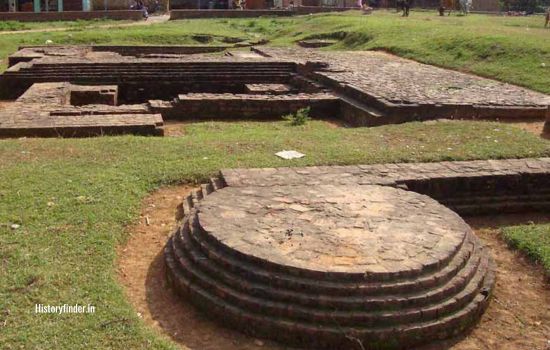
King Shashanka was a prominent warrior, invariably stated in ‘Harshacharita’ by Banabhatta and numerous inscriptions of subsequent period. Banabhatta was the famous poet of early 7th century from the court of Harshavardhana, the Pushyabhuti emperor of Thanesvara. Harshacharita mentioned about the bravery of Shashanka, for successively mitigating the frequest attacks of Harshavardhana.
Gauda King Shashanka was appreciable for his lifelong efforts to retain his empire. His remained endlessly engaged in battles with neighboring rulers. Following the death of Shashanka in 625 CE, his son Manava succeeded the throne of Karnasubarna. But King Manava could hardly resist the external threats, resulting his downfall within a year. As a result, Gauda empire was soon conquested and divided between Bhaskaravardhana of Kamarupa and Harshvardhana.
The 35 years of rule of Shashanka (590-625 CE) occupies an important phase in the history of ancient Bengal. Shashanka, the first king of unified Bengal, is also notable beginning Bengali calendar, since 595 CE. The introduction of the term ‘Bangabda’, however, probably happened later. Guada (or, Gaudiya) culture comprises an incredible legacy of old Gaudiyan language of Bengal, ‘Gaudiya Bhasha’.
History of Medieval Bengal
Downfall of Shashanka era marks the beginning of Medieval age in Bengal. The initial phase of Medieval Bengal lacked any notable ruler. As a result, eventually turned out as the darkest phase. It also brought an socio-economical collapse in the history of Bengal. But from the middle of 8th century, Bengal only kept flourishing for next 1,000 years.
Medieval history of Bengal, can therefore be classified in five following historically significant periods:
- Masyanyaya- a period of lawlessness;
- Pala Period;
- Sena Period;
- Delhi Sultanate Rule; and
- Bengal Sultanate Period
Matsyanyaya in Bengal
The death of Shashanka brought a phase of anarchy and lawlessness in Bengal until mid of 8th century. Lack of capable ruler caused Bengal literally broken into plenty of small states. But none of the kings could established a stable rule, not even a year. The ‘Ramacharitam’ kavya of poet Sandhakar Nandi termed this period as ‘Matsyanyaya’ (matsya – ‘fish’ and nyaya – ‘law’). The absence of law or punishment let the bigger fishes indiscriminately hunting the smaller ones. Matsyanyaya, for such reason, marks itself as one of the darkest phases in the history of Bengal.
Legacy of Pala Culture in Bengal
Gopala, with the help of a group of powerful local leaders, founded the Pala Empire in Gauda in 750 CE. The Pala kings were highly effective in bringing back law and order in the state. Gopala, who was the first king of the Pala Dynasty, extended his rule over all of Bengal and Bihar.
King Dharmapala, son and successor of Gopala, further stretched Pala empire to the northern part of Indian subcontinent. King Devepala succeeded his father Dharmapala and became the most powerful Pala king. He successfully conquested the territories of Varmanas of Kamarupa and terminated the Huna attack. Govindapala, the last Pala emperor, lost the seat of Gauda to Sena king Ballala Sena in 1165 CE.
Bengal received some astonishing works in terms of Pala arts, literature and architecture. Pala period also introduced ‘Charyapada’, the first literary form of proto-Bengali language.

The Pala Kings were the final rulers who supported Buddhism in Bengal. The Pala emperors constructed many Buddhist institutions and monasteries throughout their empire. King Dharmapala established Vikramashila (located in present-day Bhagalpur, Bihar), which was a renowned university in the early 9th century. Dharmapala also built Somapura Mahavihara in Paharpur, in present-day Naogaon district of Bangladesh. These constructions reflect how Dharmapala and the Pala Dynasty supported both education and Buddhism in Bengal.
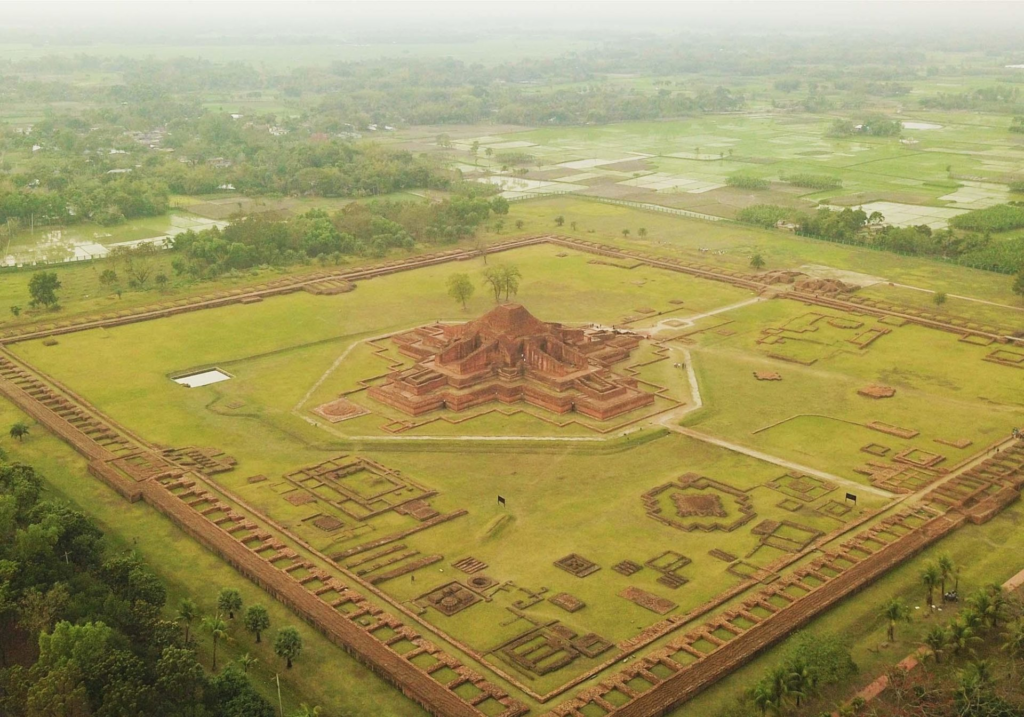
The rule of the Pala Dynasty (750-1161 CE) definitely added a wonderful part to the history of Bengal. Archaeological digs uncovered many Pala coins and inscriptions from different areas of Bengal. For this reason, many historians refer to the Pala era as the golden period in Bengal’s history. After more than a hundred years of instability, prosperity was restored.
Rise of Sena Empire in Bengal
Ballala Sena dethroned Govindapala from Gauda and established Sena dynasty in Bengal in 1165 CE. Vijayasena, father and predecessor of Ballalasena, however, already captured several Pala territories during his reign. Northern and eastern Bengal probably came under Sena dynasty during the period of Vijayasena. Foundation of Sena dynasty in Bengal also reflected in its cultural, religious and social life.
Ballala Sena, 4th ruler of Sena dynasty, was also familiar as Ballal Sen in old Bengali literature. He made his capital at Nabadwip in Nadia district. The remains of Sena palace still appears at Nabadwip, as an architectural heritage of Sena dynasty in Bengal.

Lakshmana Sena, the next Sena king, was notable for extensive expeditions and territorial expansion. In his early military career, Lakshman Sena brought regions of Kamarupa and Kalinga under Sena empire. But the Muslim historians deferred completely and mentioned Lakhshmana Sena as coward. He escaped from the back door, when Muhammad Bakhtiyar Khalji invaded Nabadwip, without showing any sign of protest. As a result, Bengal went under Delhi Sultanate, effortlessly dethroning Lakshmana Sena, the last ruler of Sena dynasty. However, Sena dynasty perhaps ruled for few more decades at the southeastern Bengal.
Sena kings were pure Hindu devotees and believer of rigid caste system. It brought certain religious changes in Bengal. They built several Hindu temples. Dhakeshwari temple of present Dhaka reflects a splendid Sena art and architecture in Bengal.
Influence of Sena Dynasty on Bengal
Famous Sankrit poet Jayadeva belonged to the court of Lakshmana Sena, familiar as one of his ‘Pancha Ratnas’ (five gems). Bengal received its precious Gita Govindam (or, Geet Govinda), a collection of poems from Kavi Jayadev. Lakshmana Sena’s court also consisted other Sanskrit poets including Dhyoti, Umapatidhara and Sarana, thriving Sanskrit literature in Bengal. Gauda got its new name as Lakhnauti during Sena period.
Delhi Sultanate Era in Bengal (1204-1352 CE)
The Nadia invasion by Muhammad Bakhtiyar was a great success against the Sena empire. Afterwards, he took control of Guada. This led to the establishment of Delhi Sultanate rule in the western part of northern Bengal.
In 1206, Mamluk generals of Mohammad Ghori assassinated him. Ghori didn’t have any male heirs. This let Qutub ud-din Aibak of Mamluk dynasty rise to power at Delhi Sultanate. For ease of administrative control, they split Delhi Sulatane into 3 major provinces- Ghazni, Multan and Bengal. Eventually province of Bengal came under BakhtiyarcKhalji. But the sudden death of Bakhtiyar in the same year disrupted the stability of the Delhi Sultanate’s rule in Bengal.
In 1211, Iltutmish raised to power at Delhi Sultanate. He made attempts to control Bengal’s administration by appointing Governor of Bengal. But his trusted governors rebelled to acquire independent authority on Bengal. Hence, Delhi Sultanate had to organize military conquests, from time to time, to neutralize those rebellers. It was never getting easy to establish effortless control over Bengal from Delhi.
Rise of Ilyas Shah
In 1325, Ghiyas ud-din Tughlaq, the Sultan of Delhi, further split Bengal into 3 sub-provinces. Fakhruddin Mubarak Shah ruled eastern Bengal from Sonargaon. Alauddin Ali Shah was given charge of northern Bengal, from the seat of Gauda. And Shamsuddin Ilyas Shah controlled southern Bengal from Satgaon. Ilyas Shah soon dethroned Alauddin Shah from Gauda.
In 1352, Ilyas Shah gained control of Sonargaon and became the ruler of Bengal. As a result, Shamsuddin Ilyas Shah declared himself as an independent ruler of Bengal. Delhi Sultanate, after the 2nd battle and the siege of Ekdala, left Bengal and recognized it as an independent Sultanate.
Battles of Ekdala
Ilyas Shah rebellion provoked Delhi Sultan Firuz Shah Tughlaq to attack Bengal in 1353. The Bengal army couldn’t withstand the Delhi army in the first battle of Ekdala. Ilyas Shah fled from the battlefield. Bengal agreed to be under the sovereignty of the Delhi Sultanate temporarily through a peace treaty. Ilyas Shah’s son, Sikandar Shah, suceeded his father at Bengal Sultanate.
Delhi Sultan had to inavde Bengal once more in 1359, as Sikandar Shah violated the peace treaty. Shikandar Shah, like his father, took shelter in Ekdala fort. Delhi army besieged the fort for months but finally decided to retreat, exhausted of Bengal’s climate. Eventually Firoz Shah Tughlaq returned to Delhi acknowledging the legidity of Bengal Sultanate with a peace treaty.

Influence of Delhi Sultanate
Delhi Sultanate introduced Muslim culture to the region. It resulted a huge Musilm settlement in Bengal. Bakhtiyar Khalji played an important part in establishing the Muslim community in Bengal. Many mosques and madrasas were built, which greatly influenced the religious and cultural aspects of Bengal. Sufi saints and their melodious poems had a great influence on Bengal’s culture.
Delhi Sultanate also produced numerous coins in Bengal. The first coins had the inscription ‘Gaudiya Vijaye’ in Sanskrit, which represented the conquest of Gauda.
Bengal Sultanate
Ilyas Shah, the Governor of Satgaon province under Delhi Sultanate, established a distinct Sultanate in Bengal. It went through a phase of conflicts with Delhi Sultanate (1353-1359) though. But eventually Sultan of Delhi was forced to recognize Bengal as an independent Sultatante with a peace treaty. Ilyas Shah made Pandua his capital. The historic city of present Malda district in West Bengal is full in remains of Sultani legacy. The remains of Adina Mosque at Pandua, largest mosque of India then, represents the astonishing architecture of Bengal Sultanate.
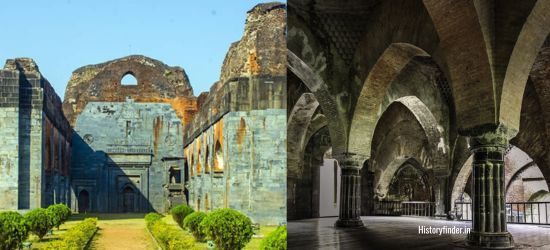
Shamsuddin Ilyas Shah established the Ilyas Shahi dynasty, which ruled the Bengal Sultanate until the early 15th century. In 1414, Raja Ganesha founded the Ganesha dynasty in Bengal, overthrowing Alauddin Firoz Shah. For the next two decades, the Ganesha dynasty governed the Bengal Sultanate. His son, Jalaluddin Mohammad Shah, converted to Islam and became a promising ruler, although his reign was short. The Ilyas Shahi dynasty returned to power in 1435, ruling until the late 15th century. The Hussain Shahi dynasty gained prominence after it took control of Bengal in 1494.
Trades in Bengal Sultanate Period
Fertile lands of Bengal would produce rice, indigo in huge quantity that had huge demand in European markets. Sultans of Bengal encouraged foreign companies to establish their trading hubs in Bengal. In 1528, Bengal Sultanate granted the trading permit to the Portugese. The Portugese settlement in Chittagong was the first European colonial settlement in Bengal.
Bengal Sultanate, with was then recognized as one of the richest states in the Indian subcontinent. The region had plenty of resources for trading goods. Bengal was also notable for its mint towns. Taka (arrived from Sanskrit ‘Tanka’) was the primary curreny of Bengal. During the Hussain Shahi regime, as many as 19 mint towns existed in Bengal. This shows how prosperous Bengal became during the Bengal Sultanate period.
Mughal – Bengal Battles
After the downfall of the Delhi Sultanate and the establishment of the Mughal dynasty in Delhi in 1526, Babur began his conquest of Bengal. The Battle of Ghaghra (1529 CE) concluded with a peace treaty between the Mughal emperor Babur and Nasrat Shah, the Sultan of Bengal. Humayun, the second Mughal emperor, invaded Bengal and successfully captured Gaur. The Mughal emperor Akbar launched two military campaigns in Bengal. In the Battle of Rajmahal in 1576, Akbar dethroned Daud Khan Durrani from the Sultanate of Bengal.
Baro Bhuyas (twelve landlords) of Bengal played an impotant role to resist Mughal expansion in the region for several decades. Despite of Sultan’s support, the confederacy of Baro Bhuyas, showed up extreme military proficiency. Under the leadership of Isa Khan of Sonargaon, they neutralized several naval attacks of the Mughals. The word ‘Baro’ denotes twelve, but actual count of Buyas were more than that. Probably, the confederacy was initially joined by twelve Bhuyas, from which the name arrived. Later many others joined to protect their respective lands. However, the Baro Bhuyas of Bengal, for their unbelievable efforts, occupies a glorious space in the history of Bengal.
Modern History of Bengal
Modern era in Bengal commences from the Mughal victory at the Battle of Rajmahal, led by Akbar in 1574. Mughals brought a new wave to the Bengali cultures, which marked a glorious footprint in the history of Bengal. During the Nawabi regime, Bengal had seen the heights of prosperity. Eventually, it all collapsed gradually with the rise of British dominion in Bengal, further expanded across entire Indian subcontinent. Economical collpase eventually induced a period of struggle for independence, where Bengal had a significant contribution.
The modern history of Bengal, therefore, had three following important phases:
- Mughal Bengal;
- Nawabi Bengal; and
- British Bengal.
Mughal Bengal (1574-1717)
Badshah Akbar implemented the Subedari system in his kingdom, appointing his loyal military leaders as Subedars. Bengal became a Mughal province called Subah in 1574. Subah of Mughal Bengal, then consisted of present Bangladesh and Indian states of West Bengal, Bihar and Orissa. Abul Fazl’s Ain-i-Akbari highlights the growth and progress of the ancient city of Murshidabad during Akbar’s reign. Old Murshidabad was then renamed as Makhsudabad, in the honor of famous merchant Makhsus Khan.
Capital of Mughal Bengal
Badshah Jahangir, the 4th Mughal emperor, chose Decca (now Dhaka) as the capital of Bengal. Dhaka, the new capital of Mughal Bengal, was beautified with impressive buildings, fortresses, mosques, and gardens. To honor the emperor, the new city was renamed Jahangir Nagar.
Shaista Khan became the Subahdar (governor) of Jahangir Nagar in 1664. He successfully gained control of the important port city, Chittagong, from the Arakan Empire. Under Shaista Khan’s leadership, the Mughal rule in Bengal prospered greatly.
Shah Suja, the son of Mughal emperor Shah Jahan and empress Mumtaz, became the Governor of Bengal in 1641. In 1657, a power struggle erupted in Delhi when Emperor Shah Jahan fell ill. Shah Suja declared himself the next emperor. But he was forced to retreat after being defeated by Aurangzeb at the Battle of Khejuha. As soon as Aurangzeb became the next Mughal emperor, Shah Suja left Dhaka for Arakan.
Trades in Mughal Bengal
Mughal Bengal became a significant player in the worldwide trade of muslin and silk. The city of Dhaka, in particular, was the primary hub for the production of Muslin, a high-quality cotton. Muslin from Dhaka gained worldwide fame. Additionally, Bengali silk and cotton textile products had very high demand in European countries. The domestic Indian market also heavily relied on rice and the textile products of Mughal Bengal.
British East India Company (EIC) made their early settlements in Hooghly in the decades of 1630. However, the British got their official trade permit from Shah Shuja in 1651. French East India Company obtained trade permit from Mughal Subehdar Shaista Khan in 1692. They settled at Chander Nagar or, present Chandan Nagar region of Hooghly.
Nawabs of Bengal (1717–1757)
Mughal emperor Farrukhsiyar, in 1717, elevated the post of Subahdar to a hereditary post of Nawab Nazim. Murshid Quli Khan, as the first Nawab of Bengal, gained supreme authority from the Mughal court. During his period, Bengal territory stretched from Oudh in west up to Arakan in the east.
Transfer of State Capital
Murshid Quli Khan, concerned about his assassination attempt, shifted his capital from Dhaka to Makhsudabad. The city was renamed to Murshidabad at the honor of the first Nawab of Bengal.
Murshidabad, the new capital of the Nawabs of Bengal, beautified with palaces, gardens, mosques and also protected with forts. Plenty of merchant families started settling at Murshidabad. Manik Chand, one of the prominent bankers of Nagaur, who once supported Farrukhsiyar to become Mughal emperor too, also stetled in Murshidabad. Farrukhsiar had given him title of Jagat Seth in return. Jagat Seth, with time, became one of the most influencial persons and very close to the Nawabs of Bengal. He also owned a mint in Murshidabad.
Subsequent Nawabs of Bengal
Shuja-ud-Din Muhammad Khan, the second Nawab of Bengal, developed Murshidabad’s royal palace, military base, city gates, revenue office and public audience hall. His son and third Nawab of Bengal, Sarfaraz Khan, was killed by his own deputy Alivardi Khan, at the Battle of Giria. Alivardi Khan thereafter ascended the throne of Nawab.
Maratha general Raghunath Rao made six attempts to concur Bengal during the realm of Alivardi Khan. He acquired a significant territory of Orissa as well. Nawab Alivardi eventually had to make a peace treaty with Ragunath Rao.
End of Independent Nawabs
Nawab Alivardi was the last Nawab to handle the foreign trading companies tactfully. Nawab Siraj ud-Daulah, successor of Alivardi and the last independent Nawab of Bengal, showed a height of immaturity. His rought behavior further elevated the family conspiracy against him. He didn’t show any diplomatic approach to the trading companies, especially the British, and engaged into conflicts. Siege of Fort William at Calcutta became the crucial factor of British-Nawab battles (refer History of Kolkata).
Retaliation from the British triggered the Battle of Plassey in 1757. General Robert Clive exploited the ongoing conspiracy against him, and gained confidence of Mir Jafar, general of Siraj. On the day of the battle, Mir Jafar betrayed Siraj and remained inactive with his troops. Forces of British East India Company eventually won the battle. Defeat at the Battle of Plassey brought an end of independent Nawabi regime in Bengal.
Bengal under British Era
The Battle of Plassey had secured the British control over the Nawabs of Bengal. Robert Clive declared his trusted Mir Jafar as new Nawab of Bengal. But Clive already had almost eliminated his authorities as Nawab Nazim.
Superior Control over Bengal
Mir Qasim, the next Nawab, fully irritated with the British intervention, wanted to remove them from Bengal. He shifted his capital to Munger and prepared his independent army. He attacked sevearal British camps at Patna, destroying Company’s offices. Mir Qasim also prepared a joint army with Mughals and Shuja ud-Daulah, the Nawab of Awadh. But East India Company convincingly defeated the joint forces at the Battle of Buxar in 1764. Victorious British East India Company made Mughal emperor Shah Alam II sign the Treaty of Allahabad. With the treaty, the British East India Company gained the Diwani rights to collect revenue across the territory of Bengal.
Bengal Presidency, formed in 1699 to control the British trades, eventually took charge of entire jurisdiction of Bengal. Calcutta, the region around the Fort William, became the de-facto capital of Bengal Presidency.
Great Bengal Famine of 1770
Bengal was already a primary hub for exporting rice, indigo, opium to Europe. With the Diwani rights over Bengal, East India Company imposed a very high tax in Bengal. In order to ensure high revenue to taxes with a shortage of trained administrators, they launched tax farming. Company further forced farmers to produce indigo and opium instead of rice and other grains. It caused a significant shortage of grains by 1768.
Things further worsen with consecutive crop failures in 1768 and 1769. Sensing the shortage, East India Company also had stored a large portion of grains for its army. Local dealers also started creating monopolies on grains in market. East India Company remained ruthless, never tried to mitigate the cricis nor reduced the burden of tax. As a result, medocre people across Bengal and Bihar went foodless for months, started dying of starvation by 1769. Food cricis were followed by an epidemic resulting a disastrous situation. By the summer of 1770, the death count of Great Bengal Famine crossed 10 million.
Repurcussions on Industries
East India Company policies led the downfall of Bengal’s textile industries. The company was in a complete mood to suck money from Bengal, leaving nothing apart. Other industries of Bengal also started suffering due to extremely high taxation policies, and started collapsing one by one. East India Company invested their revenues from Bengal to the emerging textile industries in Britain.
During the second decade of 19th century, industries started growing again in Bengal. Calcutta Port, the largest and busiest seaport of British Bengal was established around 1838. As a result, new industries started growing around Calcutta by the middle of 19th century. Ports of Narayanganj, Chittagong and Dhaka were other prominent ports in Bengal. However, growing industries of Calcutta had prompted East India Company to introduce railways to Bengal in 1854. The Eastern Bengal Railway and the Assam Bengal Railway had opened their offices in Bengal. In 1903, the Calcutta Stock Exchange was established.
Indian Rebellion of 1857
By the August of 1856, East India Company began production of greased rifle cartridges at the Fort William, Calcutta. During the late 1856, a rumour spread across British Bengal Army, that these cartridges are greased with cow and pig fats. This would mean the sepoys, who had to cut the cartridges with their teeth, will lose their religious status in their community. It also produced a belief that the Company officers were willing to destory their castism.
In February 1857, the 19th Bengal Native Infantry (BNI) regiment sepoys protested against use of those acrtridges. Mangal Pandey of 34th BNI, was the first sepoy to revolt against his commanders of East India Company. On 29 March 1857, at the Barrackpore parade ground near Calcutta, Mangal Pandey revolted. He fired at Sergeant-Major James Hewson and his adjutant Lt. Henry Baugh who came to investigate the matter.
General John Hearsey, ordered the quarter guard Jamadar Ishwari Prasad to arrest Mangal Pandey immediately. But Prasad refused to do so and joined Pandey. Mangla Pandey soon realized his attempt to animate his fellow sepoys to participate in active rebellion has failed. He then tried to shot himself but ended up injuring himself with a bullet shot. Pandey and Prasad both were sentenced to death on their respective court martials. Mangal Pandey and Ishwari Prasad were hanged on 8 April and 21 April respectively. The regiment of 34th BNI was later dismantled by the East India Company.
Sepoys’ Mutiny of Barrackpur had spread to the other parts of Bengal including Dhaka, Chittagong, Jalpaiguri, Sylhet and Agartala. By May of 1857 it turned into much greater shape.
Takeover by the British Crown
The great rebellion of 1857 enforced administrative changes in the British colonial rule in India. The administration went under dierct control of British Crown from East India Company. However, Fort William remained the de-facto capital of Indian territories ruled by the British. The Governor of Bengal also represented the position of Governor General of India. Queen Victoria took the title of ‘Empress of India’ in 1877. At the same time, Calcutta was officially declared as the Capital of British India. Until 1912, Calcutta served as the capital of British India.
Indigo Revolution
Indigo farmers protested against British planters during 1859-60, notable as Indigo Revolution in history of Bengal.
Renaissance of Bengal
Until late 18th century, castism, religious discrimination was at highest peak in Bengal, dominated by upper caste Hindus. During, late 18th and early 20th century, several Bengali visionaries stepped in reforming the declining socio-political ideologies of Bengal. This period is therefore, referred as the period of Bengal Renaissance, a very important chapter in Bengal’s history. Raja Rammohan Roy was recognized as the ‘Father of the Bengal Renaissance’ for his socio-religious movements against superstitious practices like ‘Sati’. He was the co-founder of Brahma Sabha, who conducted such movements in the Hindu society. Such movemnets had produced anti-colonialist and nationalist thoughts that further led the Freedom Struggles of India in later decades.
Pundit Ishwar Chandra Bandopadhyay (Vidyasagar) was a another prominent litterateur, educator and social reformer of 19th century. Widow remarriages were a severe breach in Hindu society. Vidyasagar’s prolong efforts led Lord Dalhousie personally finalising the bill of Hindu Widows’ Remarriage Act 1856. His voice against child marriage also led to clearence of Age of Consent Act, 1891.
Bengal progressed exceptionally in literature during these two centuries. Poets and novelists like Rabindranath Tagore, Bankim Chandra Chattopadhyay, Kazi Nazrul Islam with their remarkable poems, novels and literatures, influenced the cultural and social reformation of Bengal. Bengali youths got the modern ideologies through these literatures and novels.
Bengal also achieved remarkable progress in scientific developments. Jagadish Chandra Bose, the Father of Bengali Science Fiction, was notable for pioneering investigations of radio and microwave optics. Satyendra Nath Bose, Prafulla Chnadra Ray and Meghnad Saha were among other many other prominent scientists of Bengal Renaissance.
Bengal in Freedom Struggles of India
Bengal played a crucial role in the history of Indian freedom movements. Bengali nationalists called Bengal as ‘Banga Maata’ (mother of Bengal) and India as ‘Bharat Maata’ (Mother of India). The Birtish torture on Indians were represented as torture on Bharat Maata. The ‘Vande Mataram’ song by Bankim Chandra had a termendous influence on Bengali youths. Bengali nationlists raised their voice on equal rights, justice.The organizations like Anushilan Samiti and Jugantar trained the youth to fight against foreign rulers. Freedom fighters like Chittaranjan Das, Khudiram Bose, Sarojini Naidu, and many others emerged from Bengal.
Sri Aurobindo and Revolutionary Groups
From the late 19th century onwards, Bengali revolutionarists became active in Bengal. Sri Aurobino Ghosh and his brother Barindra Ghosh led Anushilan Samiti of Dhaka. It was officially just a fitness club. But during early 20th century, it became most deadly and famous Bengali revolutionary group under cover. Similarly, Jugantar founder by the two, another under cover revolutionary group became active in Calcutta during the period. They influenced and trained young activists in arms and explosives. Several memebers of these rebel groups were arrested, tortured, jailed and executed by the British.
First Partition of Bengal (1905)
First Partition of Bengal of 1905 was a dark chapter in Bengal’s history. The rising freedom movements in Bengal forced Lord Curzon, to declare partition of Bengal on 20th July 1905. It came on effect from 16th October 1905. Although Lord Curzon had may had to do it for an ‘administrative ease’. But majortiry of Bengal realised it as ‘Divide and Rule’ policy from the British.
The First Partition of Bengal eventually gave rise to the movement for reunion, often referred as ‘Banga Bhanga Movement’ in the history of Bengal. Rabindranath Tagore emphasised inter-religious bondings, by tying Rakhi on 16 October, 1905, especially to Muslims. The Banga Bhanga Movement in Bengal kept rising further. Eventually Lord Hardinge had to declare Reunion of Bengal in 1911.
Assassination Attempt of Kingsford
Khudiram Basu and Prafulla Chaki of Jugantar attempted to assassinate British Magistrate Douglas Kingsford in 1908. They threw a bomb to carriage anticipating Kingsford was inside, ended up killing two British women. Prafulla Chaki shot himself dead before the British policemen could arrest him. However, Khudiram Basu became the youngest revolutionarist of Bengal executed by the British, after being sentenced to death and hanged on 11 August, 1908.
Assassination of Simpson
In 1930, Operation Freedom was launched in protest of police repressions across the jails in Bengal. Benoy Basu shot British Inspector General Lowman dead in Dhaka and fled to Calcutta. He then planned to assassinate Col N. S. Simpson, infamous for his brutality on the political prisoners in Calcutta. On 8th December 1930, Benoy Basu along with Badal Gupta and Dinesh Gupta marched into Writers’ Building in European attire, and shot Simpson dead. After a brief gun battle, they were soon surrounded by the British cops. Refusing to surrender, Badal took Potassium Cyanide and died instantly. The other two shot themselves. Benoy died in hospital on 13th December, 1930. Dinesh survived until sentenced to death and hanged on 7th July, 1931.
Netaji in Freedom Movements
Freedom movements in India reached its peak with appearence of Netaji Subhas Chandra Bose. Between 1923-40, Subhash Chandra was involved non-violent freedom movements of India led by Mahatma Gandhi, as a member of Indian National Congress (INC) party. He bagan his own newspaper ‘Swaraj’ and started promoting the Bengal Provincial Congress Committee. Netaji became the General Secretary of Indian National Congress in 1927 and organized annual meeting of INC in Calcutta the next year. In 1939, Subhash Chandra founded All India Forward Block, with INC party, to consolidate the movements against the British Raj. But around 1940, he started beleiving that only non-violence can’t bring independence to India. Following his disagreements with Mahatma Gandhi and other Congress leaders, he chose to leave INC party.
Around 1940s, Netaji became an invincible national leader and seemed unstoppable to the British. In 1941, British kept Netaji under house arrest at his Elgin Road residence in Calcutta. But he managed to escape to Germany despite of British CID surveillance. He founded 950th (Indian) Infantry Regiment in Berlin with 4500 Indian prisoners to conduct a military invasion to British India. But soon the Germans withdrew their support.

Netaji Subhash, after Hitler withdrew his support, decided to reach for Japan to ask for military support. In December 1941, Netaji Subhash Chandra Bose took charge of the Indian National Army (INA) in Japan. Despite of all military challenges, Bose continued his ‘Azad Hind’ movements. The famous speech of Netaji “Give me blood and I shall give you freedom” influenced the Azad Hind soldiers a lot. Netaji also declared provisional ‘Azad Hind Goverment of Free India’ at Andaman and Nicobar Islands in 1943.
The Azad Hind Fauj although had its movements outside Bengal. But their history of sacrifices are always attached with the history of Bengal along with Netaji.
Partition of Bengal
By June of 1947, Mountbatten Plan looked for the partition of India and Pakistan. During primary joint meeting decided (a vote of 120 vs 90) that undivided Bengal will join Dominion of Pakistan. But the separate voting by the legislator of West Bengal decided to join the Dominion of India (58 votes to 21). On the other side, East Bengal chose to join Pakistan.
English Barrister Cyril Radcliffe drew the border lines of India and Pakistan. East Bengal eventually became East Pakistan. In 1971, subject to India-Pakistan War, Indian Army made Pakistan Army surrender in East Pakistan. East Bengal was introduced to the world as a free nation of Bangladesh.
FAQs on History of Bengal
According to famous historian Sir Jadunath Sarkar, Murshid Quli Khan was originally a Hindu. His early name was Surya Narayan Mishra who born in Deccan in 1670. Ma’asir al-Umara, written by Samsam ud Daula Shah Nawaz Khan and his son Abdul Hai Khan also supports this statement. Haji Shafi, a Persian, who fostered him from his age of 10 years, converted him to Islam.
Sanyasi or Monk Rebellion is the first anti-British independent movement in India which took place between 1770-77. The monks of Murshidabad and Jalpaiguri against enforcement of religious Tax by the British. Pandit Bhabani Chandra Pathak led the movement which later spread in parts of Bangdesh and Bihar as well.
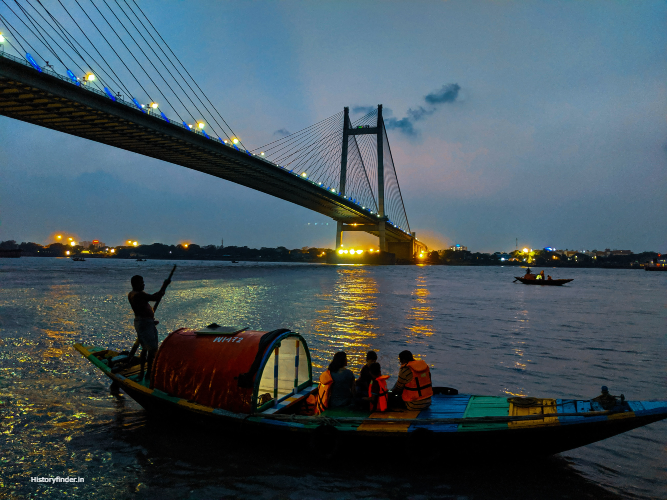
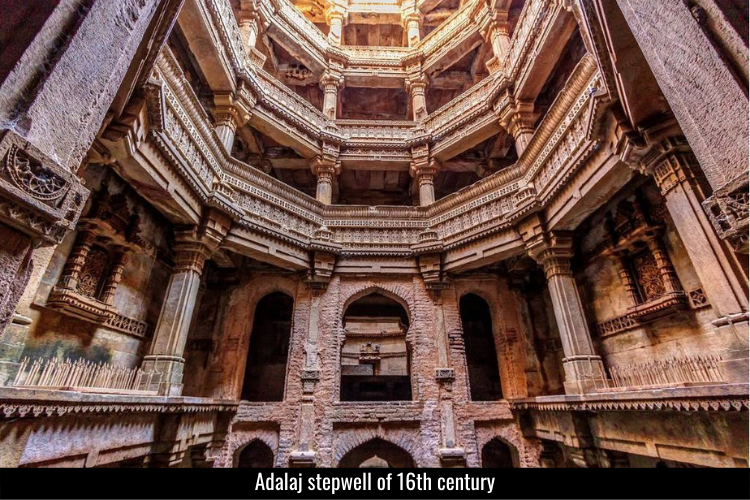
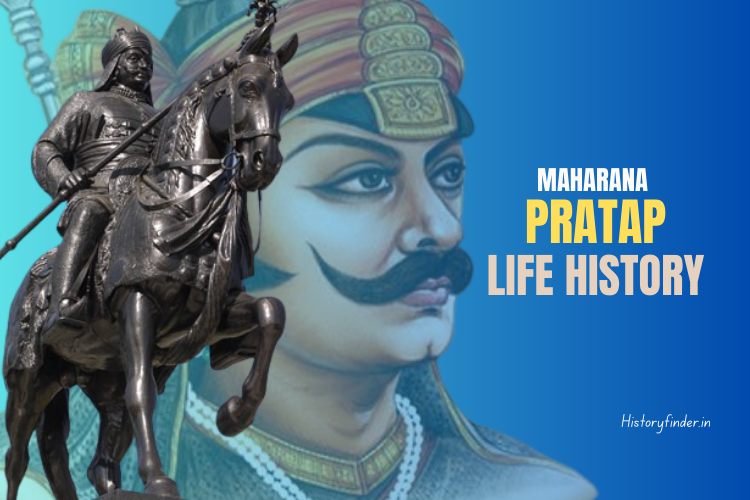
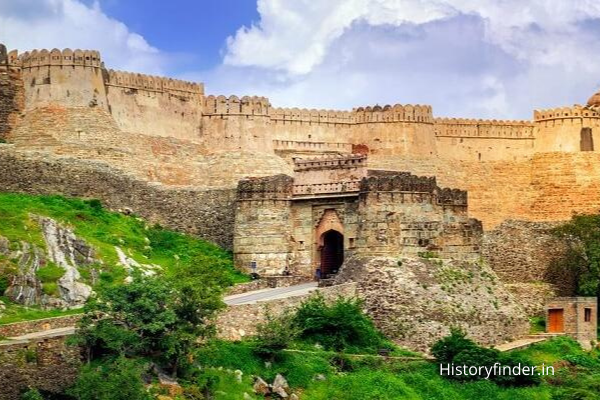
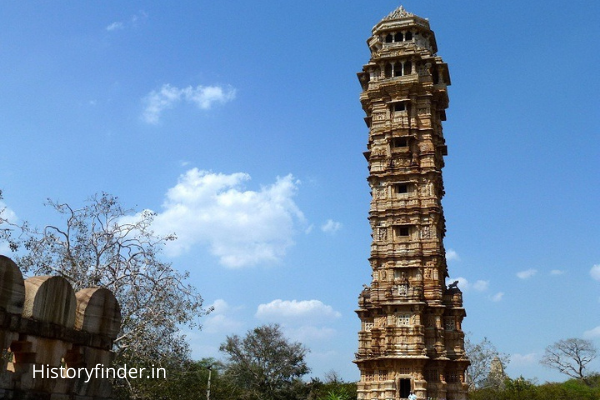
Pingback: Archaeological site of Chandraketugarh in West Bengal - History Finder
Pingback: The ruins of Chandraketugarh in West Bengal - History Finder
Pingback: Gwalior Fort history: from kachhawahas to Scindias - History Finder
Pingback: History of Indian Museum Kolkata - History Finder
Pingback: Cooch Behar Palace history - History Finder
Pingback: Jaisalmer Fort history and bravery of Bhati Rajputs - History Finder
Pingback: Victoria Memorial Kolkata History and Architecture - History Finder
Pingback: Writers' Building Kolkata - History Finder